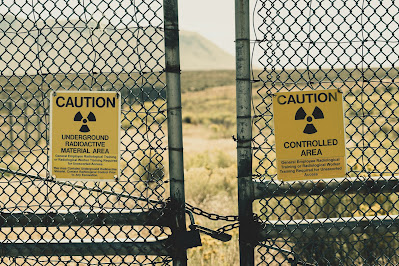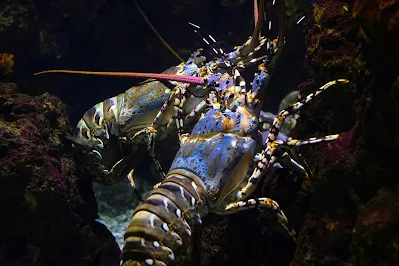Featured
- Get link
- X
- Other Apps
How is the Colour of a Lobster Determined?
You may have been sitting at the dining table, eating an expensive, bright, red lobster and wondered why the lobster turns red but is dark maroon when uncooked? Actually, not all lobsters are that typical dark maroon colour, such that you also may have seen a rare blue lobster, maybe even a yellow one, or even, a fully white lobster. But why are there different colours of lobsters, and how are they determined?
This article was brought to you by Orion Research and explores the cool science behind lobsters and their colour.
Firstly, Lobsters’ colour comes from the algae and plants they eat. According to Nick Wade, a researcher in Queensland, the usual maroon red actually comes from the plants they eat, which produce a molecule known as carotenoid. Carotenoids are ubiquitous in plants and when consumed by lobsters, the bright red pigment known as astaxanthin is what makes the dark maroon colour on their shells before being cooked. A similar occurrence is in flamingos where the carotenoids make them pink.
Lobsters store astaxanthin under their shells where it binds with various proteins. There could be mutations in lobsters, formed by the way that astaxanthin interacts with these proteins. A lobster with a blue colour hue mutation may have molecules (for blue/ dark blue lobsters the molecules are known as crustacyanin) that bond with the carotenoids, reflecting blue light, resulting in the blue of lobsters. This can make the lobsters a spectrum of colours. This is how the colour of a lobster is determined. Additionally, no matter the colour of a lobster, except albino lobsters, lobsters turn red during the cooking stage because the astaxanthin is enhanced and the proteins responsible for different colours (like crustacyanin) denature which reverts it back to its natural colour. This was explained in an article from the University of Manchester during my research.
As mentioned, lobsters can be a range of different colours, and the typical red lobster, blue lobster, bright orange lobster, and yellow lobster, are from either pure astaxanthin or genetic mutation. But other mutations make lobsters different colours. Notably, the white lobster and split lobster.
There are actually two types of white lobsters, albinism and leucism. Although they are classified as the same rarity and mostly the same, they are largely different. Lobsters with leucism have protein under their shells that are very rare compared to yellow or blue lobsters while albino lobsters have completely no melanin in their body. In humans, the more melanin there is, the darker a person’s skin is, and an albino lobster has no melanin at all, causing them to be the only colour of lobster that remains its original colour even after cooking.
Split Lobsters
Split lobsters are a special type of lobster, having a 50/50 split of any colour, mostly because of possessing male and female lobster traits, occurring not from the food they eat, but from a mutation during fertilisation. Another mention is the calico lobster, being patchy, but still being two different colours, mainly in bright orange and black.
Now the last question that remains is, which of these are the rarest? Besides the standard red lobsters occurring 99% of the time, the other colours are exceptionally rare, but blue lobsters are the most common being 1 in 2,000,000. Yellow lobsters and bright orange lobsters have the same rarity being 1 in 30,000,00, according to the Lobster Institute at the University of Maine, only finding 1 or 2 from a whole year of mass acquiring lobsters. Then there’s the calico lobster, a bright orange lobster with black spots, like a calico cat, having also a 1 in 30 million chance.
Split lobsters are next, possessing fun and interesting colours from this natural phenomenon, occurring once in 50 million lobsters. That's super rare!
But the rarest of all lobsters are the white lobsters, being of equal rarity though in my opinion, albino lobsters look way cooler with a fully white appearance. The chance of finding one is 1 in 100 million. 9 million pounds of lobster are caught each year from Maine alone. This means it would take roughly 9 years for a singular white lobster to be found.
In conclusion, lobsters get their colour from astaxanthin, which is a carotenoid commonly found in algae, this carotenoid then gets processed through the lobster, reacting with their proteins to create the dark maroon colour. However, if the proteins the lobster has are mutated, it may result in blue, yellow, bright orange, calico and cotton candy lobsters (leucism). If a lobster has no melanin, it results in the albino lobster and does not turn red after cooking, unlike all other lobster colours. Lobsters turn red after cooking after the other proteins break down resulting in the pure astaxanthin pigment being on the lobster shell.
Citations
lobster, colour, color, lobsters, change color, change colour, genetic, factors, boiled, cooked, turn red, blue lobtser, white lobster, pigment, astaxanthin, carotenoids,
Lobster color variations, Blue lobsters genetics, Why lobsters turn red, Rare lobster colors, Lobster pigmentation, Lobster shell color science, Color changes in lobsters, Cooked lobster color transformation, Lobster carotenoids, Albino lobsters explanation
Comments
Popular Posts

Why are Memories Forgotten?
- Get link
- X
- Other Apps

Can Sound Waves Solve Plastic Pollution?
- Get link
- X
- Other Apps

Can Animals Recognise Human Faces?
- Get link
- X
- Other Apps

Do plants sleep? The surprising science of sleep in the plant kingdom
- Get link
- X
- Other Apps

Is the Earth Spinning Faster?
- Get link
- X
- Other Apps

Can Bad Times Actually Improve Your Life? Surprising Benefits of Adversity
- Get link
- X
- Other Apps

Can Brain Implants Make You More Powerful?
- Get link
- X
- Other Apps

The Future and Potential of Nuclear Batteries
- Get link
- X
- Other Apps

Music and its impact on Studying
- Get link
- X
- Other Apps
Popular Posts

Why are Memories Forgotten?
- Get link
- X
- Other Apps

Can Sound Waves Solve Plastic Pollution?
- Get link
- X
- Other Apps

Can Animals Recognise Human Faces?
- Get link
- X
- Other Apps

Nice Read!
ReplyDeleteThank you heaps for this, helped me heaps. Wonderful.
ReplyDeleteSame here
DeleteWhat is this keyword spam
ReplyDeleteKeywords:
lobster, colour, color, lobsters, change color, change colour, genetic, factors, boiled, cooked, turn red, blue lobtser, white lobster, pigment, astaxanthin, carotenoids,
Lobster color variations, Blue lobsters genetics, Why lobsters turn red, Rare lobster colors, Lobster pigmentation, Lobster shell color science, Color changes in lobsters, Cooked lobster color transformation, Lobster carotenoids, Albino lobsters explanation